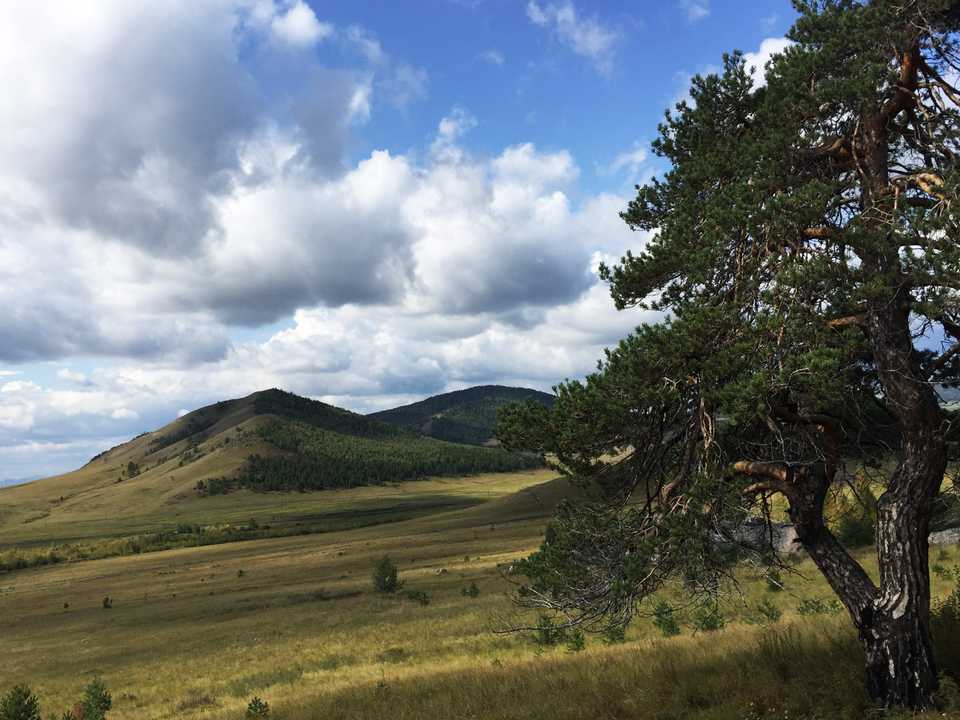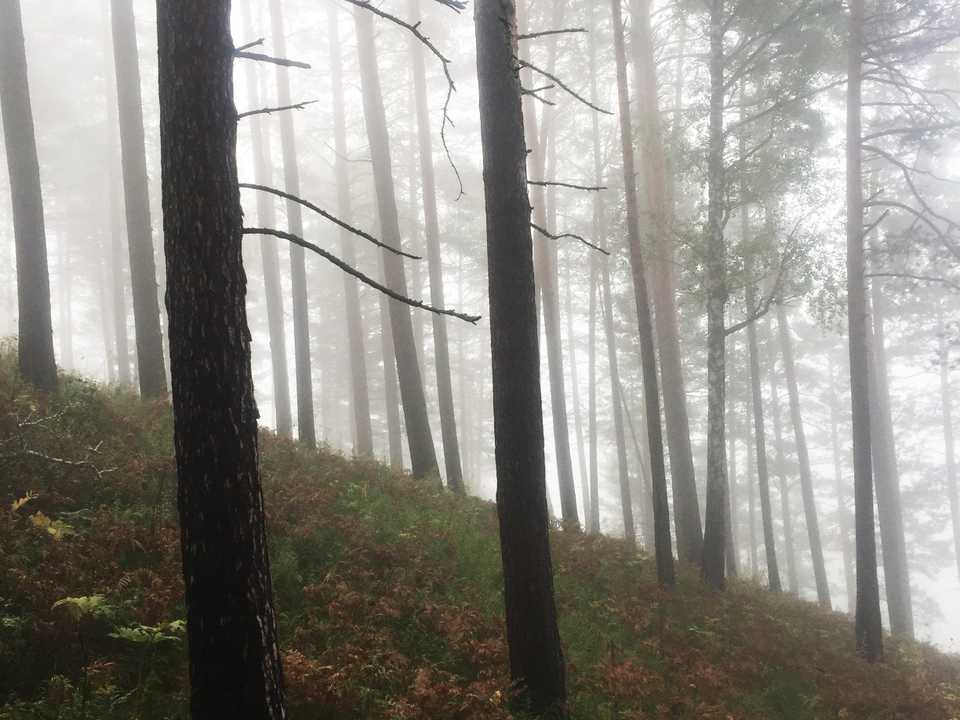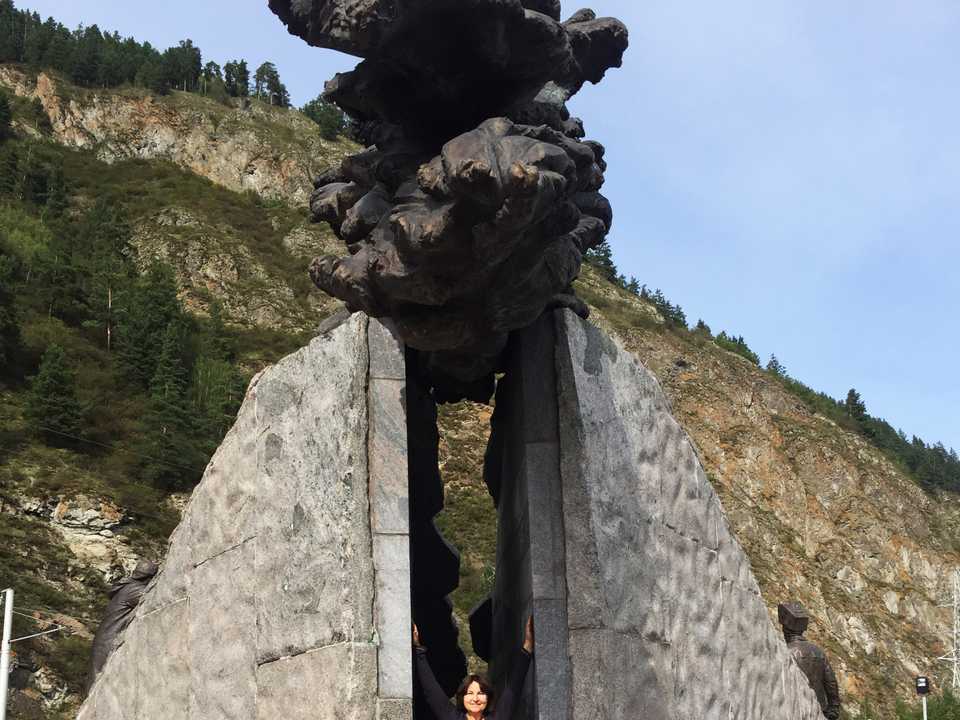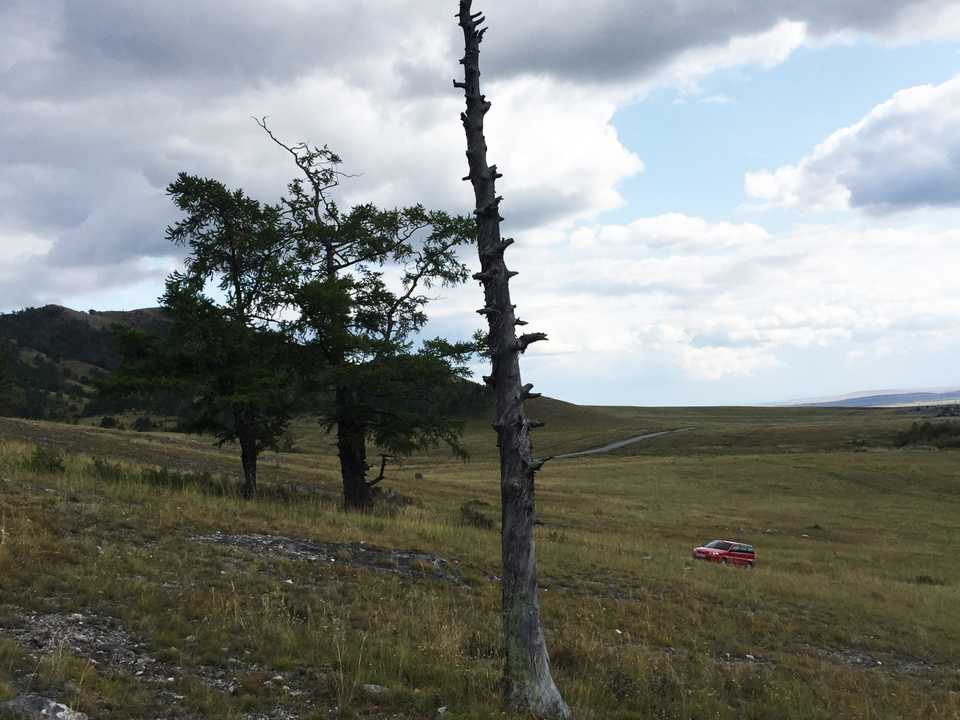New tree-ring network in Khakassia and Tuva
As of now, the project has developed a network of precipitation-sensitive tree rings along the upper reaches of the Yenisei River. The new tree-ring data updates and extends the historical network of tree-ring width chronologies in this region to 2019f. Additionally, we developed a set of pseudo tree-ring records via VS-forward simulation. This new tree-ring dataset will be incorporated into the TRISH-tool database.
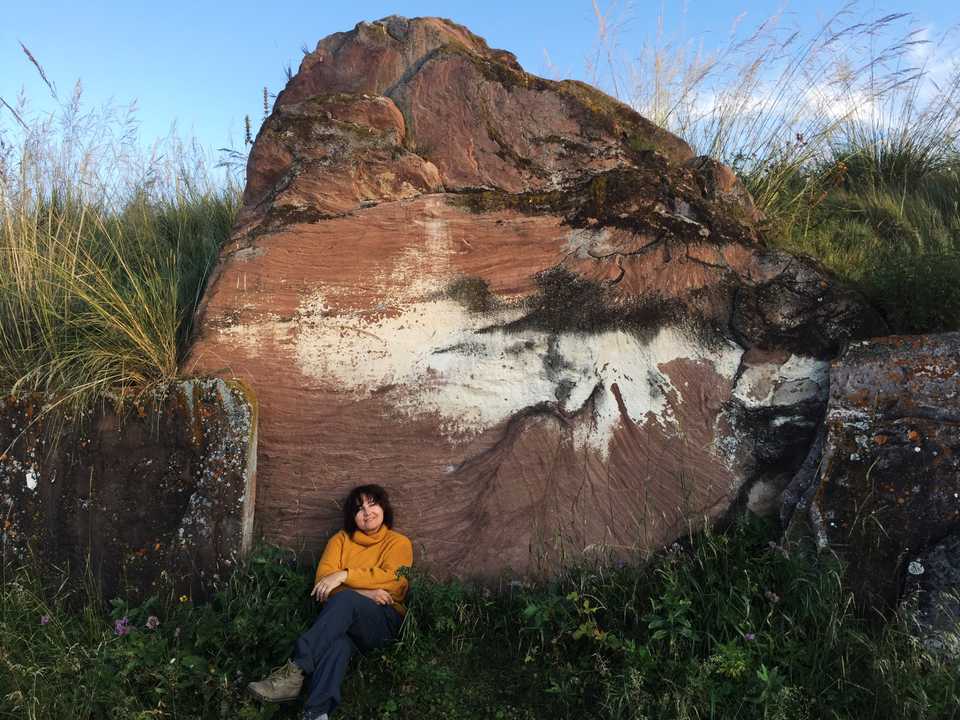 Large stone of the Great Salbyk kurgan. This tree-ring sampling area
has some of the richest archaeological heritage in Siberia. Many
kurgan fields have well-preserved timbers inside burials
suitable for tree-ring analysis.
Large stone of the Great Salbyk kurgan. This tree-ring sampling area
has some of the richest archaeological heritage in Siberia. Many
kurgan fields have well-preserved timbers inside burials
suitable for tree-ring analysis.
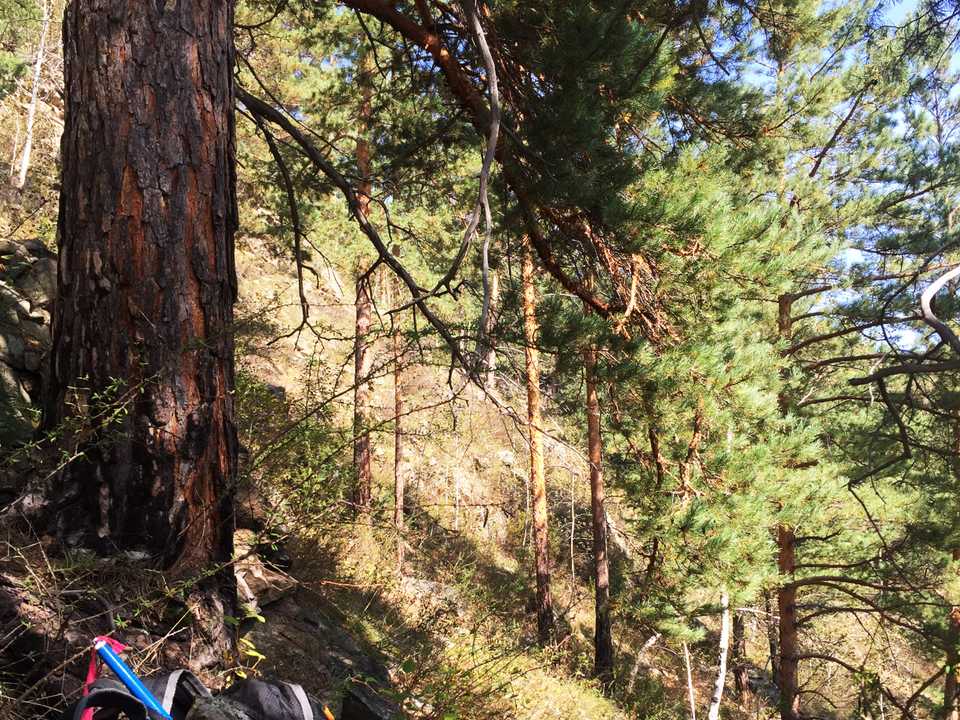 Sampling on extremely steep slopes ensures a strong hydrological
signal in the tree-ring widths. The signal in these trees is so
strong because growth conditions are very dry on these slopes.
However, these dry conditions also make these forests more susceptible
to the increasingly-frequent fires in this region.
Sampling on extremely steep slopes ensures a strong hydrological
signal in the tree-ring widths. The signal in these trees is so
strong because growth conditions are very dry on these slopes.
However, these dry conditions also make these forests more susceptible
to the increasingly-frequent fires in this region.
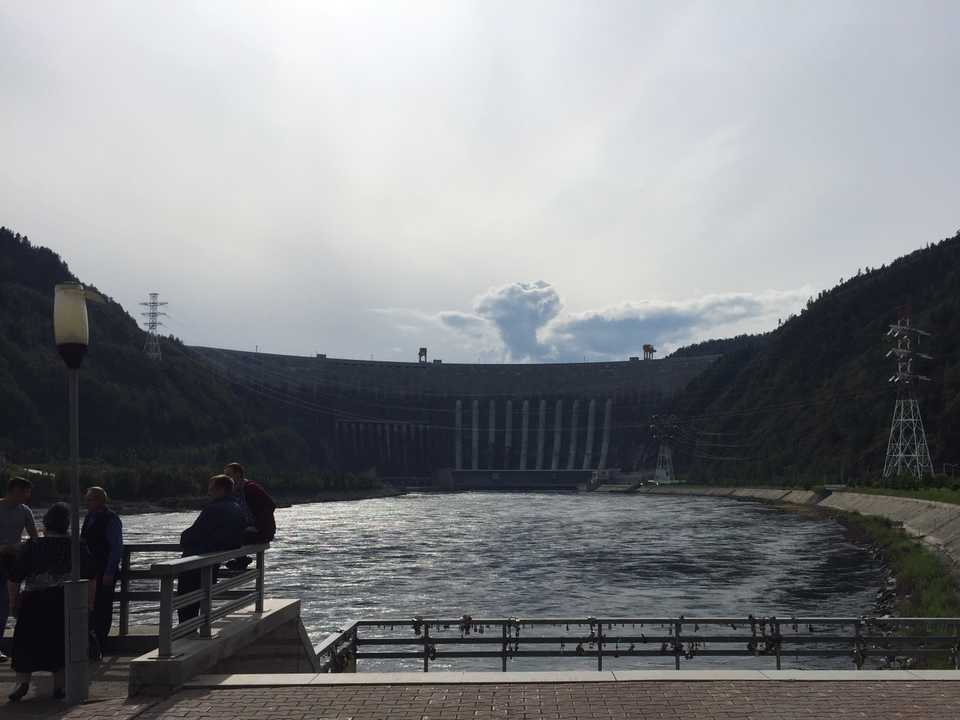 Sayano-Shushenskaya Dam, 242 m high, on the Yenisei River in
Khakassia, Russia. This is the largest power plant in Russia and holds
9th place in the ranking of the world's largest hydroelectric plants.
The dam impacts the natural river flow since 1963.
Sayano-Shushenskaya Dam, 242 m high, on the Yenisei River in
Khakassia, Russia. This is the largest power plant in Russia and holds
9th place in the ranking of the world's largest hydroelectric plants.
The dam impacts the natural river flow since 1963.
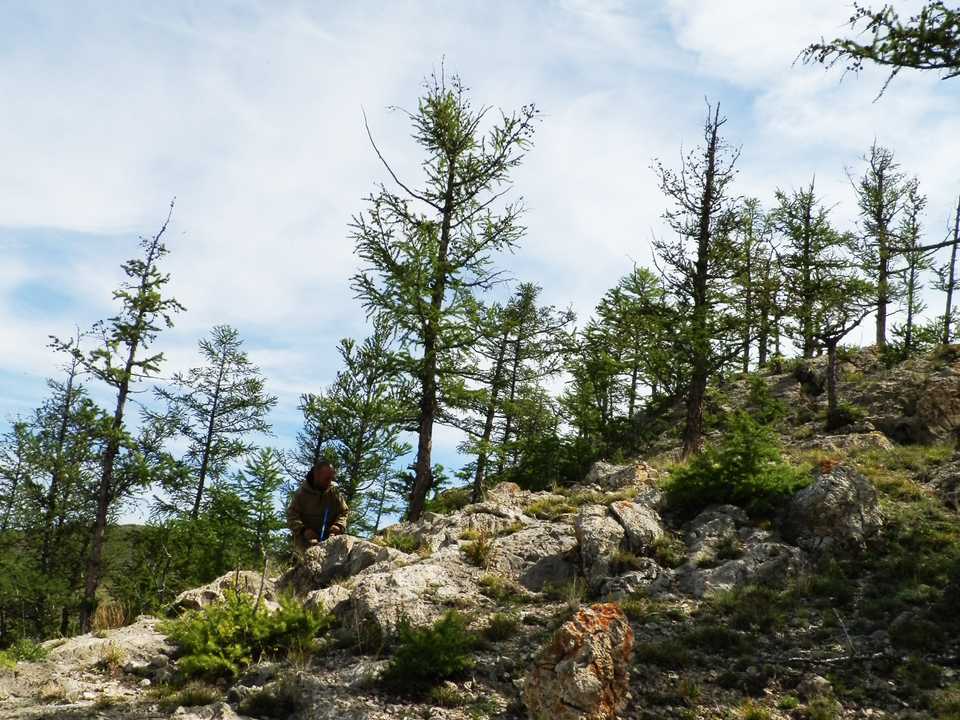 Larch and pine trees sampled in the vicinity of the
Sayano-Shushenskaya Dam in fall 2019. We search for old-growth
trees on steep slopes in forest-steppe ecotones. The
oldest trees reach up to 400–430 years in age, but these
trees are rare and hard to find.
Larch and pine trees sampled in the vicinity of the
Sayano-Shushenskaya Dam in fall 2019. We search for old-growth
trees on steep slopes in forest-steppe ecotones. The
oldest trees reach up to 400–430 years in age, but these
trees are rare and hard to find.

